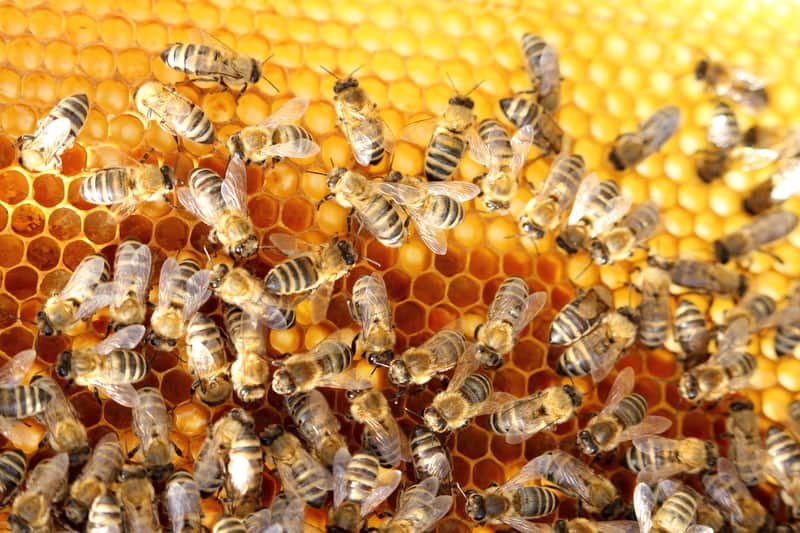What Attracts Bees To A Property?

Bee populations begin to reproduce during the summer swarming season. They branch out to form new colonies as a result of the colony’s expansion. These bee swarms travel together, with their new queen resting nearby and scout bees scouring the area for a suitable nesting site (possibly your home).
Areas that smell like honey are attractive to bees looking for a new home. If a beehive previously inhibited your property and the hive materials were not removed, it possible they will take over that area.
Bees are also attracted to specific colors and flowers. Understanding which colors/flowers attract bees will aid in the prevention of beehives in or around the home.
Learn More: FAQ Bee Exclusion
What Flowers Attract Bees?
Bees are pollinators who put in a lot of effort and need nectar and pollen from flowers to survive. There are about 4,000 species of native or wild bees in the continental United States, including bumblebees, carpenter bees, sweat bees, leafcutter bees, and mason bees, in addition to the well-known honeybee.
Flowers that bees are attracted to include:
- Agastache (anise hyssop)
- Aster
- Papaver (poppies)
- Asclepias (butterfly weed)
- Alyssum
- Rudbeckia (black-eyed Susan)
- Echinacea (coneflower)
- Trifolium (clover)
- Geranium (cranesbill)
- Monarda (bee balm)
Do Specific Color Attracts Honey Bees?
Purple, violet, and blue are the most likely colors to attract bees, according to scientists. They can see reddish wavelengths like yellow and orange, though. Blue-green, blue, violet, and “bee’s purple” are also visible to them. Bee’s purple is made up of a yellow and ultraviolet light combination. That is why humans are unable to see it.
Bees, like us, are trichromatic. That means they have three photoreceptors in their eyes and use those three colors to create color combinations. Humans use red, blue, and green to create color combinations, whereas bees use ultraviolet light, blue, and green to make theirs. This is why bees are unable to see the color red. They don’t have the necessary photoreceptors.
Do Bee Deterrents Actually Work?
Many “bee repellants” are available in hardware stores, but they are not as effective as you may think. Insect sprays, ultrasonic sound devices, and poisons are never the answer to a bee problem. These products will force the bees to migrate to another location of your property or inside your home’s walls.
The only way to prevent bees from swarming around your home is to remove the attracting source. An experienced beekeeper can inspect your home and identify what is attracting them. Then the source can be removed, resulting in effective bee exclusion rather than wasting money on ineffective prevention products.
How To Prevent Bees From Establishing Colonies Near The Home?
Bee proofing is not an easy task for inexperienced homeowners. That’s why we advised you to consult a bee control expert that comes with a trained eye that will identify weak points around your home. Bee exclusions technicians can:
- Identify gaps in exterior walls, eaves, and roof damage
- Seal openings in walls, masonry, chimneys, and plumbing
- Cover vents, utility boxes, and chimneys with bee proof screens
- Remove bee attracts such as flowers, previous beehive materials, and food sources
